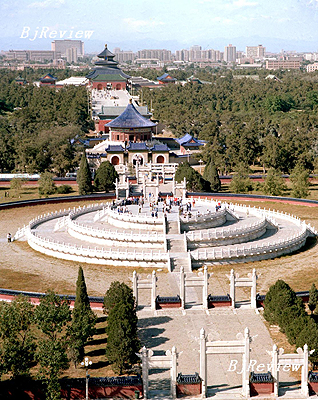|

From early March work will begin in Chongwen District, one of the four downtown districts of Beijing, to renovate 27 old hutongs, repairing the walls and doors, as well as making the surrounding area green. The project is supposed to be finished at the end of May.
The famous Qianmen Avenue, located near Tiananmen Square, is already undergoing similar restoration work that should be completed by the end of May.
The work is intended to improve the condition of the buildings while maintaining their original faces. The work on Qianmen will save both hutongs and historic shops, many of which are located in Dazhalan, a commercial street in the Qianmen area, which dates back more than 580 years.
Qianmen is the commonly used name for Zhengyang Gate. It is situated at the north-south axis of the city and has a history of over 500 years. The gate tower remains intact to this day.
Chongwen Gate, from which the Chongwen District takes its name, no longer exists. In ancient times, wine deliveries to Beijing came by the south road where merchants paid the tax at the gate. Wine shops in Beijing would put a board on the front door that said "wine from the south road," which meant tax had been paid and the wine was genuine.
Another spot that has a connection with the Olympics in Chongwen District is the Temple of Heaven, where Chinese Emperors used to pray for good harvests. This is where the emblem of Beijing Olympics was officially made public. The temple and surrounding park occupy 2.72 million square meters, even larger than the Forbidden City. The main building, the Hall of Prayer for Good Harvest, is round, 38 meters in height and 32 meters in diameter. The color of the tiles on the roof is dark blue, which represents the sky; 28 pillars in the hall represent 28 constellations in the universe; and the four dragon-well pillars in the middle of the structure are 19.2 meters high and represent the four seasons.
There is a "live" museum to the east of the Temple of Heaven-All Artisans' Shop. It is a research and development base with the mission to inherit, protect and spread traditional arts and crafts. Visitors cannot only appreciate exquisite folk arts and crafts, but also learn about their history and enjoy close communication with more than 100 handicraft masters from all over the country. | 